Qualitative Analysis: Adjuvant Therapy for Fertility in Breast Cancer
VerifiedAdded on 2023/04/25
|8
|812
|422
Presentation
AI Summary
This presentation analyzes four peer-reviewed qualitative research articles focusing on the effectiveness of adjuvant therapy in restoring fertility in breast cancer patients. The articles explore various aspects, including the use of 21-gene expression assays to guide adjuvant chemotherapy, overviews of pregnancy and fertility issues, patterns of fertility preservation and pregnancy outcomes, and the protective role of luteinizing hormone-releasing hormone analogs during chemotherapy. The analysis highlights the effectiveness of adjuvant therapy in restoring oocytes, preventing early menopause, and improving fertility outcomes over time. Limitations across the studies include insufficient data on chemotherapy-induced menopause, the timing of pregnancy, and reliance on secondary data. The presentation concludes by emphasizing the need for further research and data collection to optimize adjuvant therapy strategies for fertility preservation in breast cancer survivors. Desklib provides additional resources including past papers and solved assignments for further study.
1 out of 8
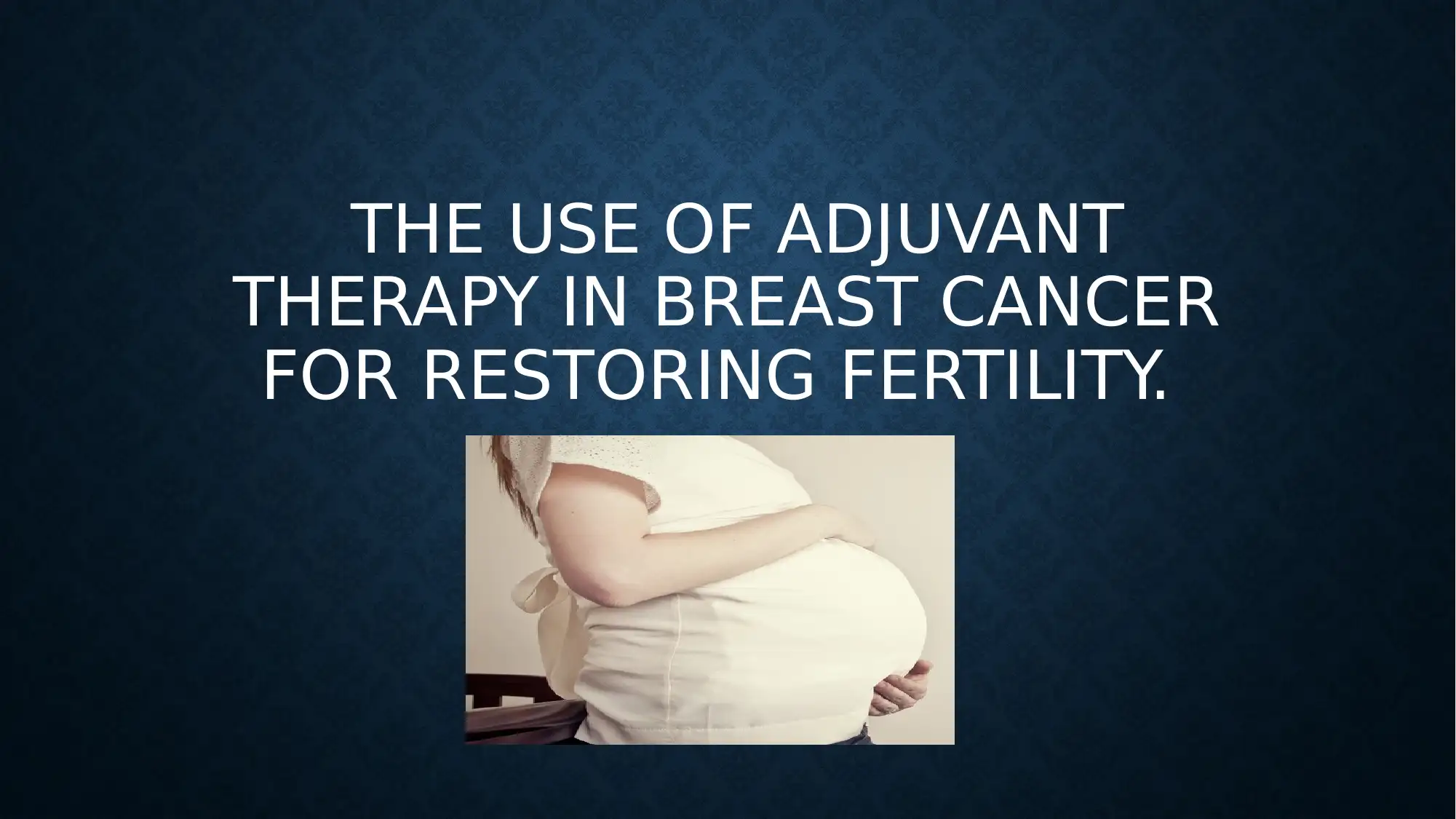
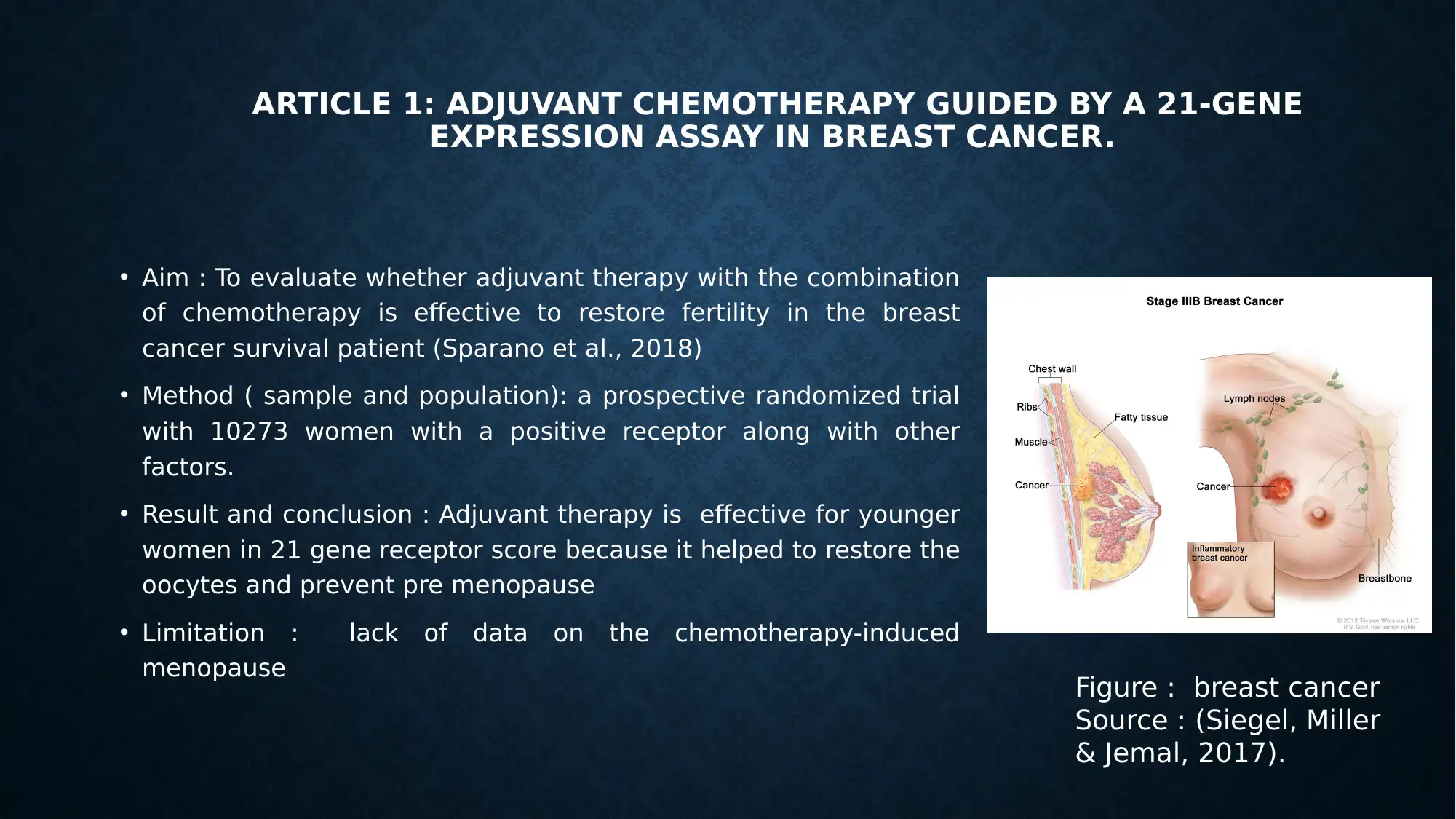
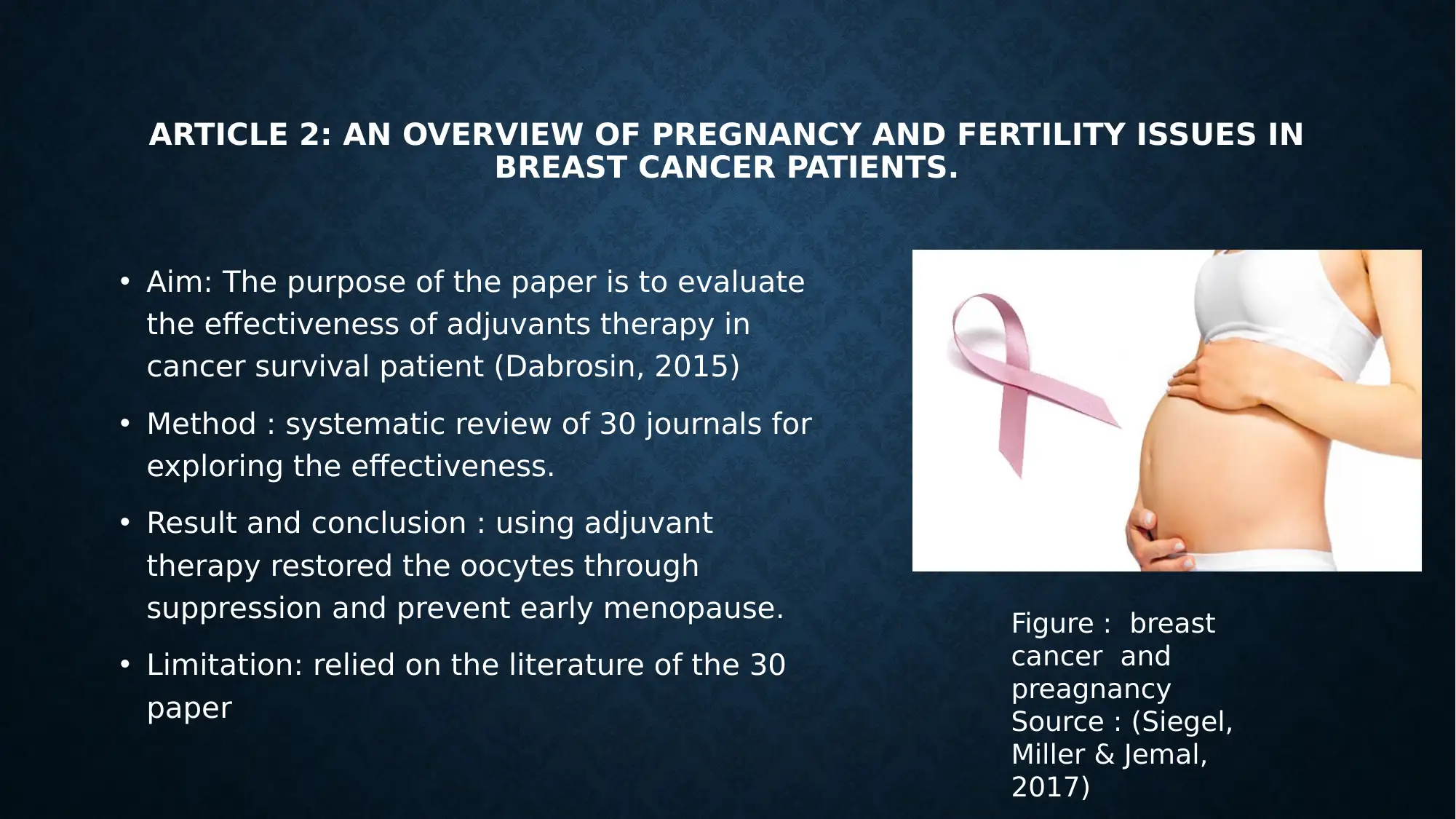

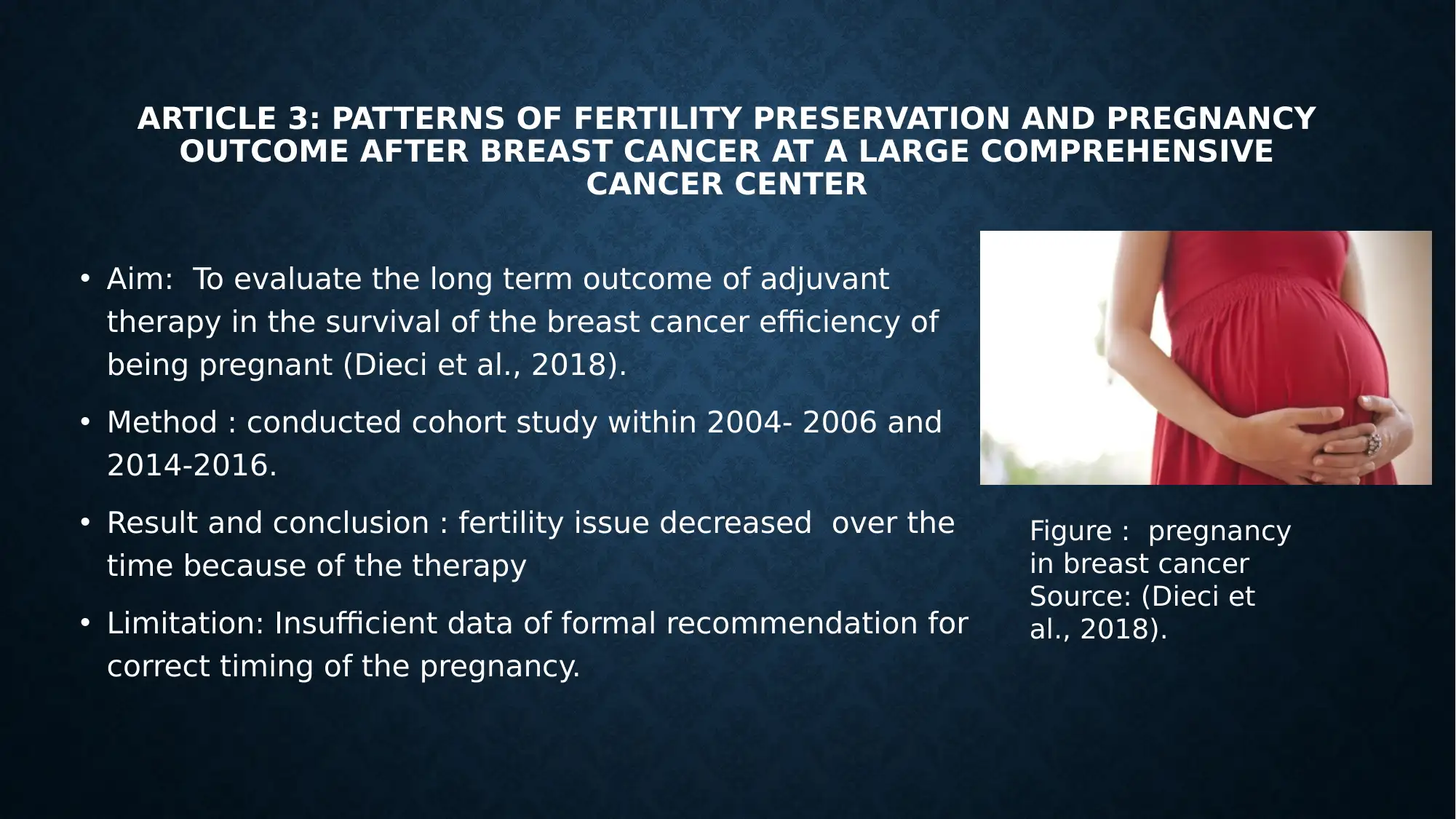
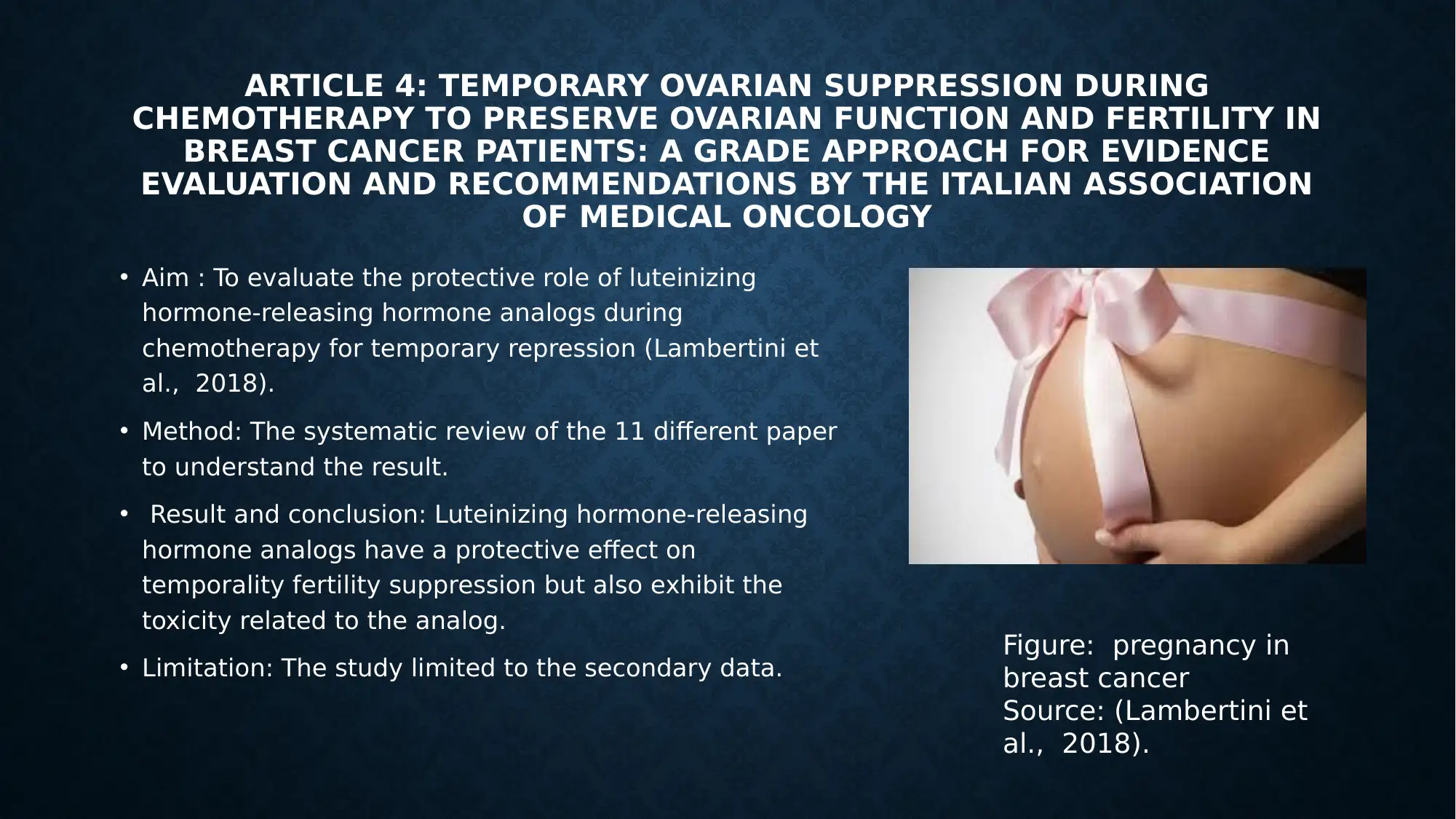
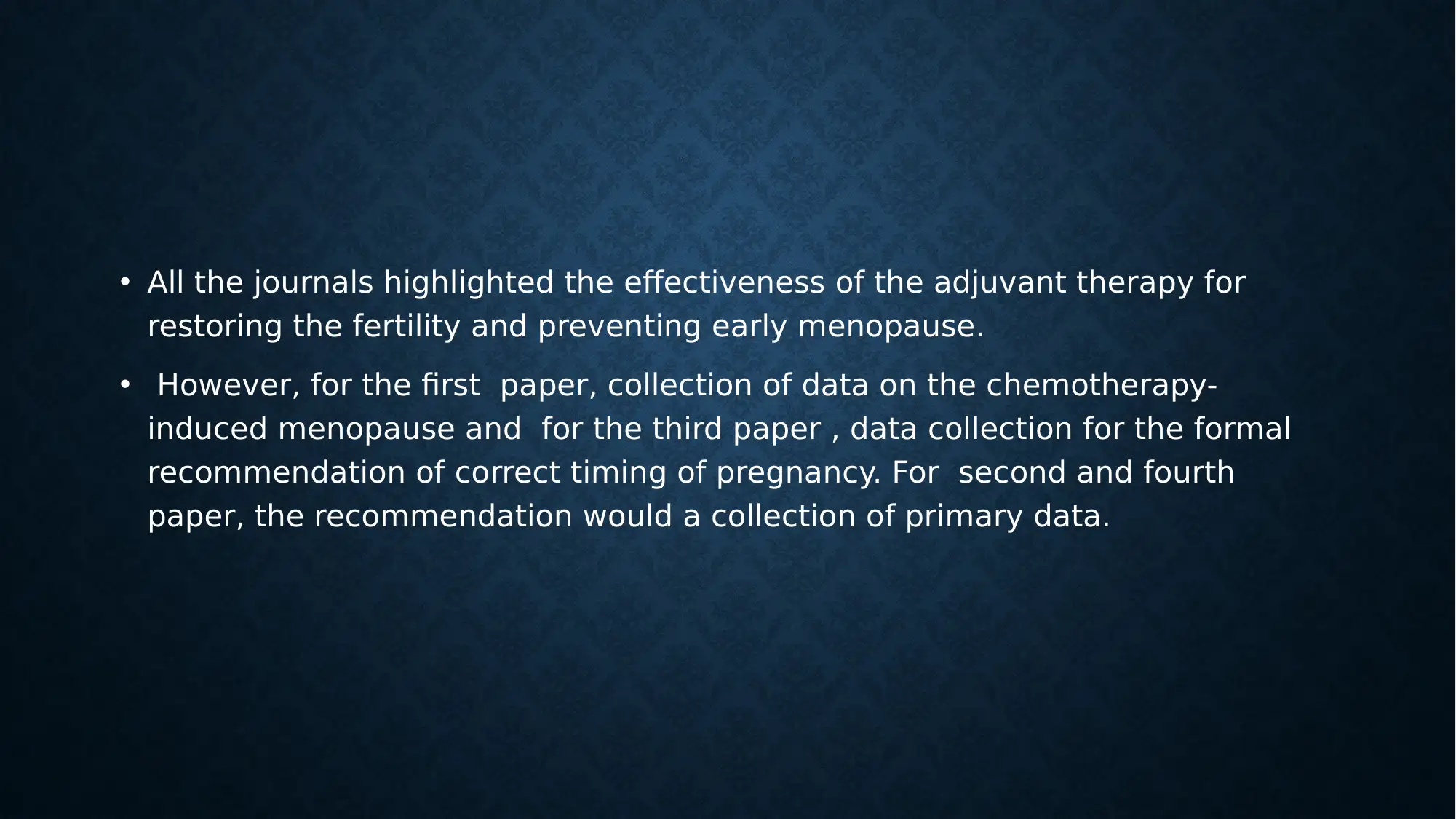
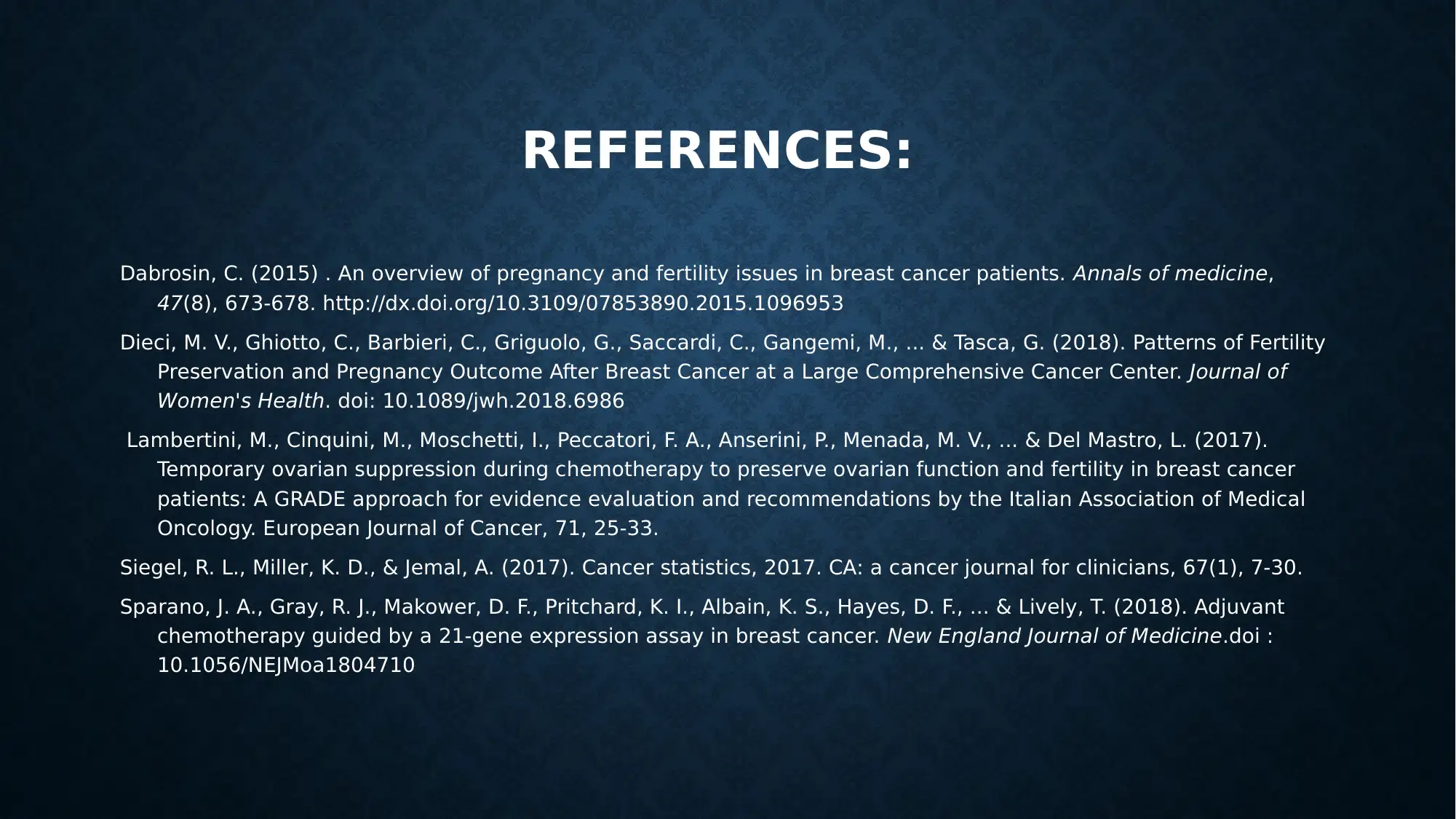




![[object Object]](/_next/static/media/star-bottom.7253800d.svg)